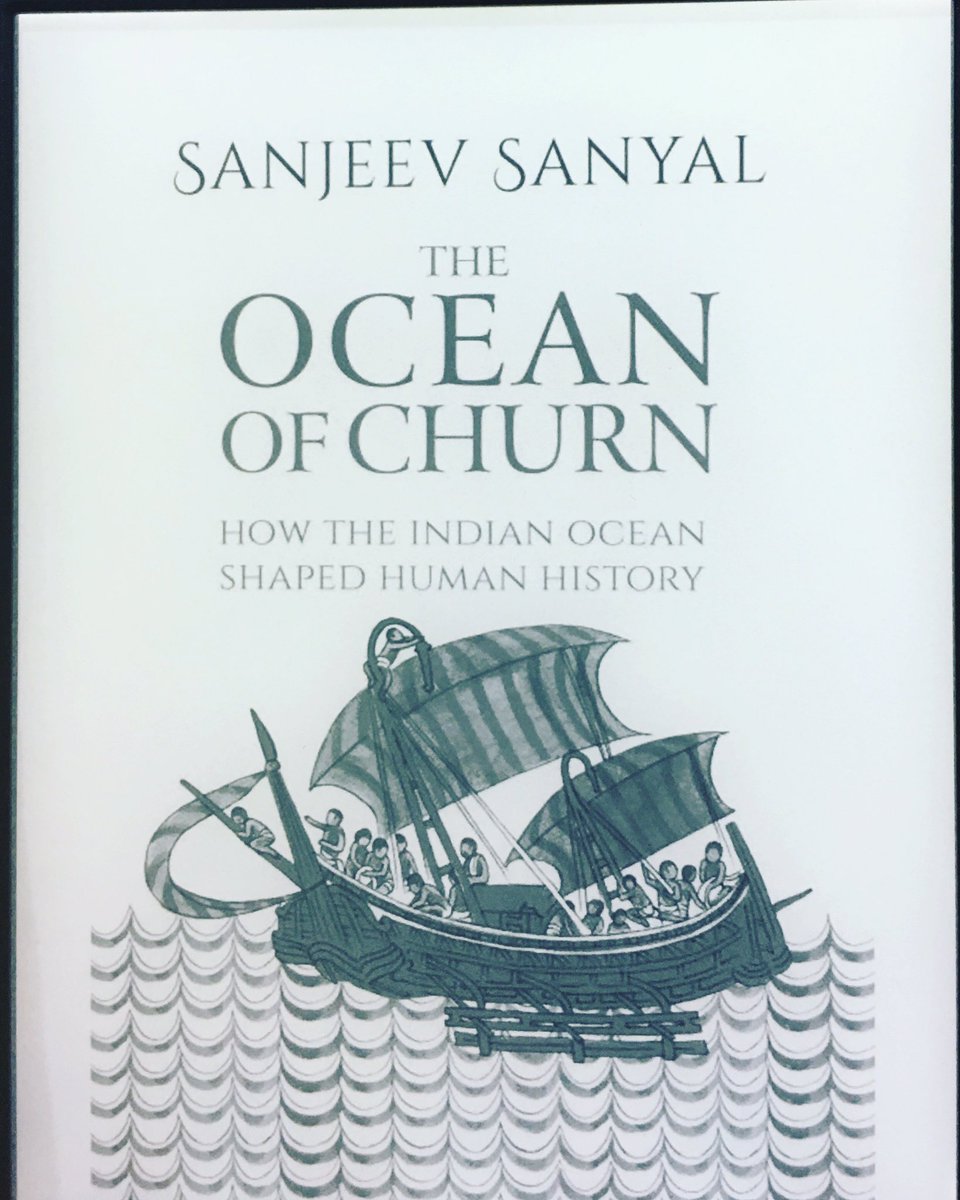It is a topic on which the reactions of both the Right and Left are at odds with the mainstream view of economists
Let's study the principal reactions, and in the process survey the Economic history of India!
1. Mainstream : India was a subsistence economy for much of its history until it started growing in the past 3-4 decades
(Contd...)
3. Nationalist view (Left): Mughal India was a Sone ki Chidiya which was badly impoverished by colonial era free trade, and has recovered since independence
commons.wikimedia.org/wiki/File:GDP_…
And the paper can be accessed here -
theunbrokenwindow.com/Development/MA…
India was not much richer than a subsistence economy from 1AD right up to 1973. Its share of world GDP was merely a reflection of its population share.
His view that right up to the Industrial Revolution, GDP shares merely reflected the Population share, is held across all geographies.
It is in line with the orthodox Malthusian perspective.
Let's examine more...
There appears to be an implicit Malthusian assumption
But these numbers contradict our historical understanding
North America was a wilderness, and a hunter gatherer society
India was a society with large empires, considerable urbanization, copious literature, among other things
Western Europe : Was a part of the massive Roman Empire!
It seems incredible, yet nobody has challenged Maddison sufficiently on this yet.
Mahabharata
Ramayana
Manu Smriti
Arthashastra
Aeneid
Homeric epics
Bible
and numerous other Latin / Greek works?
Question worth asking...
The population of Pataliputra at the height of the Gupta period circa 400CE is also estimated to be several hundred thousands...
These were very very large cities
This suggests a somewhat slavish adherence to the Malthusian maxim, that appears to be in defiance of historical records and memory
Now let's turn to more recent history...or to be more specific the past 500 years.
Here Maddison has infact been challenged by other historians
eprints.lse.ac.uk/56838/1/__lse.…
1700 PCI : $622 (clearly a decline....a period when Mughal empire covered all of India)
1800 PCI : $569 (after a century of anarchy and Mughal decline, but still preceding pan Indian British rule)
In fact it is striking that PCI in India in 1600 (at the start of the decline) at $682 was higher than the PCI in 1950 of $619!
Circa 1800 while Indian PCI is estiamated to be close to $500, the PCI of Mysore was estimated to be well in excess of $1500 and close to $2000 (by Sashi Sivaramakrishna)
Mysore at the beginning of 19th century was almost on par with UK and Netherlands whose PCI was circa $1800, in contrast to India as a whole that languished at $500
Let's discuss some numbers from Parthasarathi
books.google.co.uk/books?id=1_YEc…
Mysore was probably on par with Britain circa 1800
And we must be careful to note that the first part of this long period of decline actually corresponds to Mughal heyday and precedes the Empire's decline!
So let's study the period post 1870
data.worldbank.org/indicator/NY.G…
In fact the gap between India and the West was way bigger circa 1998 and even marginally bigger in 2017 than in 1870 - the heyday of the British Raj.
And it is almost twice as wide in 2017 as it was in 1870!
Sure, the "Nehruvian" growth rates were higher than growth rates at any point in Indian history
Yet they were awful relative to the growth rates in the rest of the world
But here again we need to make the distinction between the Nehruvian era and the Indira Gandhi era - two distinct periods.
While the activity remained in private hands to a significant extent, those hands were chained and hobbled by the state.
Instead the state got into running business. A period when large parts of the economy, including the banks were nationalized, arbitrarily.
Nehruvian period
Indira's period
Post Indira period
This is because the Indira era growth rates look slightly better than the Nehruvian period due to the impressive performance of the Agricultural sector - which had everything to do with a black swan event - The "Green revolution"
Even the process of economic reform has been in fits and starts
Growth has averaged between 5 to 7% for most of the past 30 years
In fact the gap vis-a-vis US is wider today than it was in 1913!
Let's conclude on that sobering note











